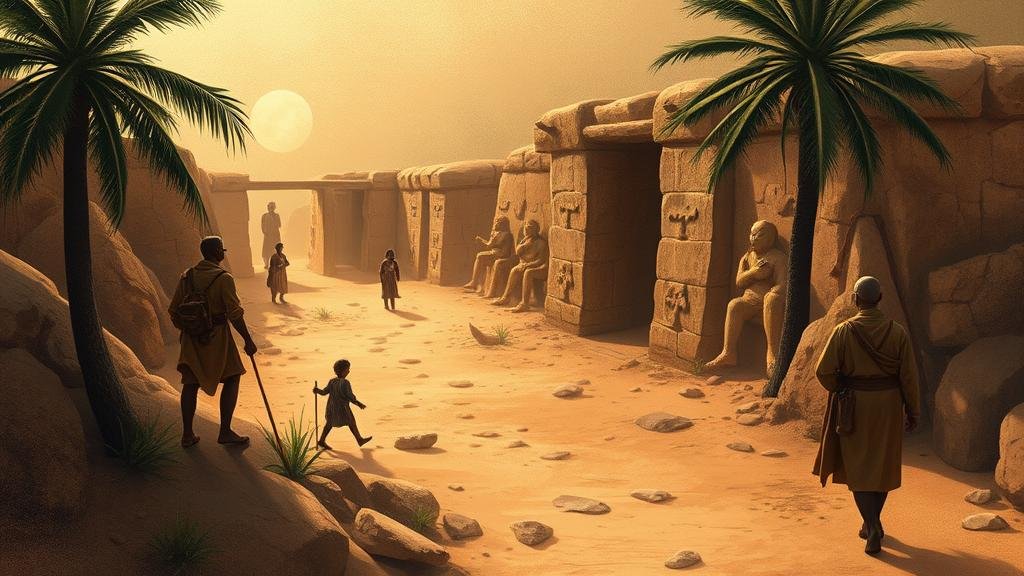Tracing the rumored paths to Zinj, the lost African city described by ancient explorers.
Tracing the Rumored Paths to Zinj, the Lost African City
The legend of Zinj, often referred to as the lost city of gold, has captivated explorers, historians, and treasure hunters for centuries. Described by ancient travelers as a prosperous city teeming with riches, Zinj is believed to have been located in the heart of Africa, likely somewhere within the modern boundaries of East Africa. This article delves into the historical accounts, geographical clues, and the continuing quest to uncover the enigmatic paths leading to Zinj.
The Historical Context of Zinj
The term Zinj likely originates from the Arabic term Zanj referring to East African coast inhabitants. first significant Western reference to Zinj can be traced back to the 12th century, specifically in the account of the famous Moroccan explorer, Ibn Battuta. He described a prosperous city known for its wealth and exotic goods. According to Battuta, Zinj was a vibrant hub of trade that influenced the economic landscape of the region.
Aside from Ibn Battuta, the Portuguese navigator Vasco da Gama also mentioned Zinj in his narratives during the late 15th century while exploring the coast of East Africa. According to his accounts, Zinj was reputed to possess an immense treasure that attracted the interest of colonial powers, igniting a wave of explorations and conquests aimed at uncovering its riches.
Geographical Significance and Locations
While the exact location of Zinj remains ambiguous, various theories suggest potential sites across East Africa. Historical texts and oral traditions point towards several key areas:
- Tanzania: Many scholars argue that Zinj corresponds to sites near the Kilwa Kisiwani archipelago, known for its historical trading centers. Archaeological excavations in this region have uncovered remnants of ancient stone structures and valuable trade artifacts.
- Somalia: Some historians proposed that Zinj could be linked to the coastal city of Mogadishu, supported by accounts of early Arab traders who frequented this vibrant maritime hub.
- Kenya: The coastal city of Mombasa has also been associated with legends of Zinj, given its significance as a trade center, vital for the exchange of gold, ivory, and spices.
Modern Discoveries and Interpretations
In recent decades, archaeologists have conducted extensive research to unlock the secrets of Zinj. Digging through layers of history, they have employed ground-penetrating radar technology to examine underground structures and have identified numerous Islamic artifacts that could connect modern sites to the ancient city.
One notable excavation occurred in 2000 at Kilwa Kisonge, revealing a complex of coral stone ruins that could correspond with descriptions of Zinj from medieval documents. Also, the ancient trade routes have been mapped to assess the flow of goods and cultural exchange, providing further insights into Zinjs possible location.
The Significance of Zinj in Cultural History
Zinj represents more than just a lost city–it embodies a rich tapestry of African history, trade, and cultural interaction. The exploration of Zinj has probably been a catalyst for understanding the interconnectedness of the medieval world, particularly how the East African coast acted as a conduit between Africa, the Middle East, and the Indian Ocean trading networks.
Also, the tales of Zinj continue to shape our modern understandings of ancient urban centers in Africa. allure of its lost riches often obscures the significant cultural contributions and sophisticated societies that existed in these regions long before colonial influences.
Conclusion: The Quest for Zinj Continues
The search for Zinj remains an enticing pursuit that intertwines history with myth. As archaeological methods advance and historical research sheds new light on ancient texts, the quest to uncover the rumored paths to Zinj grows ever more intriguing. While the city may be lost to time, the exploration of its legacy continues to inspire journeys that explore humanity’s rich and diverse past.
For modern explorers and curious minds alike, the story of Zinj serves as a reminder that the mysteries of our past are worth pursuing, encouraging a deeper appreciation for the heritage of Africa and its hidden treasures.


